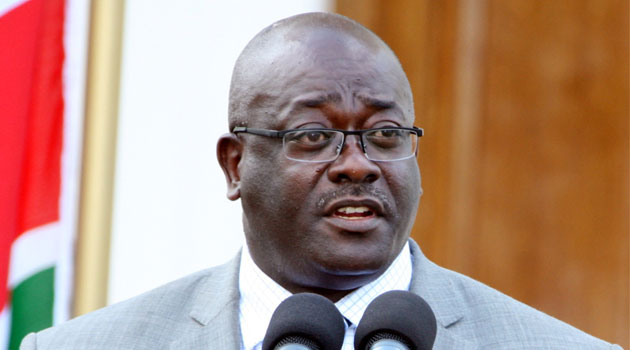
Energy Cabinet Secretary Davis Chirchir told fellow Cabinet Secretaries that some schools have already been supplied with power, while the remaining 6,000 schools will be connected under an ongoing project/FILE
Energy Cabinet Secretary Davis Chirchir told fellow Cabinet Secretaries that some schools have already been supplied with power, while the remaining 6,000 schools will be connected under an ongoing project.
According to Chirchir, the ministry’s flagship projects were on course and in the next five years they would meet the 5,000 Megawatts (MW) target.
In response to concerns raised about the expected effect on the environment and water, he pointed out that 61 percent of the new energy would be from renewable sources.
He also confirmed that the new energy would lower the price per kilowatt hour to Sh6 and in the next five years raise the number of Kenyans that can access power from 30 to between 75 and 80 percent.
Speaking at the Cabinet and Principal Secretaries retreat in Nanyuki, Chirchir disclosed that the Lamu to Lokichar crude pipeline project will be ready by 2016.
The cost of electricity is set to significantly come down starting July following the completion of the 280 Megawatts (MW) Olkaria I and IV geothermal power plants.
Chirchir said that the two projects would bring down electricity tariffs thus cushioning households and business from the high energy costs.
“The completion of these two projects (Olkaria I and IV) will significantly address the issue of power costs in Kenya. This will help to further boost the competitiveness of the Kenyan economy,” said Chirchir.
He added that the government was keen on lowering the cost of electricity supplied to consumers to as low as Sh6 per kilowatt hour from the current Sh16.
“The cost of producing electricity using geothermal steam can go as low as two US cents making it possible to lower the cost of energy substantially to spur economic growth,” Chirchir explained.
Olkaria I and IV will produce 140 Megawatts each plans to build additional plants at Olkaria V, VI and VII sites to generate an additional 350 MW of geothermal power.
Geothermal currently accounts for 13 percent of the national energy generation mix or 205MW.










































